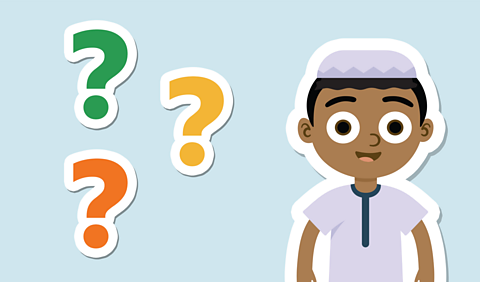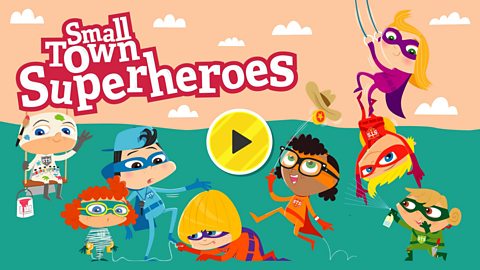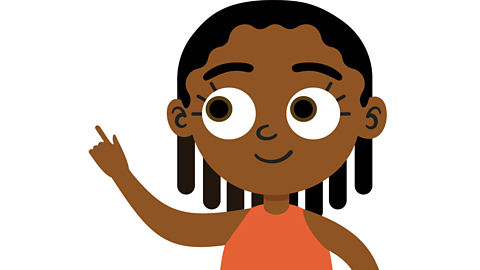
Watch: How to use capital letters and full stops
When we write sentences, we always use a capital letter at the start and and a full stop, question mark or exclamation mark when we end a sentence.
We also use capital letters for I and for proper nouns (the names of people, places, languages, days of the week and countries).

Oh, what's this?
Get well soon scoop, love from Max. Oh, Max, this is lovely!
I need to teach you about capitals and full stops.
Let's do it now! Then we can make this card for Scoop really special.
Ok. Capital letters go at the start of a sentence.
"Get well soon ScoopÔÇØ is our first sentence. So "get" needs a capital G.
"love from Max" is our second sentence. That means that "love" needs a capital "L". Amazing!
And full stops go at the end of a sentence. Great job Max.
We also use capital letters at the start of someone's name. So there are two names in your card.
We've got Scoop and Max. Wow. You're a really fast learner Max!
He's working! Never mind.
Watch: Capital letters and full stops
At the end of a sentence we put punctuation.
This is usually a full stop but can also be a question mark or exclamation mark, depending on the type of sentence.
Hello boys and girls! Its your little old grandma here! But dont be fooledIm actually the coolest hip-hop granny in town.
Bop! Bop! Do the full stop bop!
Bop! Bop! Do the full stop bop!
Bop! Bop! Do the full stop bop!
Bop! Bop! Do the full stop bop!
Boppidity bop bop bop. Do the full stop!
Boppidity bop bop bop. Do the full stop!
B-b-b-b-b. Do the full stop!
Boppidity bop. Do the full stop bop!
Word space, word space.
Dancing around all over the place.
Word space, word space.
Moving my body to the groovy bass.
Word space, word space.
Bopping around IÔÇÖm about to pop.
Word space, word space.
I finish my sentence with a big full stop!
Sentences start with a capital letter!
A capital letter I how they start.
Capital letters when we start at the beginning.
When we end the sentence, we put a full stop!
Names of the people start with capital letters!
Capital letter, it starts my name.
Like Peter or Jacob, Ayesha or Sarah.
The capital letter, it stays the same!
Word space, word space.
Dancing around all over the place.
Word space, word space.
Moving my body to the groovy bass.
Word space, word space.
Bopping around IÔÇÖm about to pop.
Word space, word space.
I finish my sentence with a big full stop.
When I say ÔÇÿIÔÇÖ, itÔÇÖs a capital letter.
ItÔÇÖs a capital letter when I say I.
The pronoun ÔÇÿIÔÇÖ is a capital letter.
And when I finish my sentence, I put a full stop.
Months of the year have a capital letter, a capital letter!
When youÔÇÖre writing a month like January, February, March, April, May!
ItÔÇÖs a capital letter for every day!
Names of the places have capital letters, capital letters they start place names.
Like London or Cardiff or Brighton or Blackpool!
A capital letters, itÔÇÖs always the same.
So now you know how to use capital letters!
ItÔÇÖs really pretty easy when you know how!
Capital letters when we start at the beginning!
When we end the sentence we put a full stop!
Bop! Bop! Do the full stop bop!
Bop! Bop! Do the full stop bop!
Bop! Bop! Do the full stop bop!
Bop! Bop! Do the full stop bop!
Boppidity bop bop bop. Do the full stop!
Boppidity bop bop bop. Do the full stop!
B-b-b-b-b. Do the full stop!
Boppidity bop bop bop. Do the full stop!
Word space, word space.
Dancing around all over the place.
Word space, word space.
Moving my body to the groovy bass.
Word space, word space.
Bopping around IÔÇÖm about to pop!
Word space, word space.
I finish my sentence with a big full stop!
Activity 1
Play the 'Punctuation' mini game on Small Town Superheroes.
Use the yellow arrows to navigate to the Ernie section to find the Punctuation game, then choose Full stops.
If you can, open the game in a new tab. You can do this by right clicking on the window and selecting 'open link in new tab'.
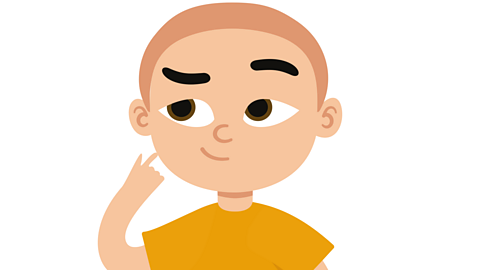
Activity 2
Next you are going to watch a video about a book called Sam Silver: Undercover Pirate.
Before watching the video, write one sentence explaining what you think it might be about. Remember to use a capital letter at the start and a full stop at the end.
Once you've written your sentence, watch the video below.

Actress Anjli Mohindra reads extracts from 'Sam Silver: Undercover Pirate' by Jan Burchett and Sara Vogler.
Now you've watched the video and you know what the story is about, look back on your sentence - how close were you to guessing correctly?
Now, write two more sentences that would describe the story to someone who doesn't know it. Don't forget your capital letters and full stops!

Activity 3
Create a list of words that you would associate with pirates. Here are some to get you started:
- eye-patch
- skull and cross bones
- parrot
Once you've made your list, try writing three sentences about pirates using words from your list. Make sure you use capital letters and full stops.
Here are some examples:
- Some pirates wear an eye-patch over one of their eyes.
- A pirate flag usually has a skull and cross bones on it.
- A parrot can sit on the shoulder of a pirate.

Karate Cats English game. game
Head to the dojo to become an expert in spelling, punctuation and grammar.

More on Punctuation
Find out more by working through a topic
- count4 of 6
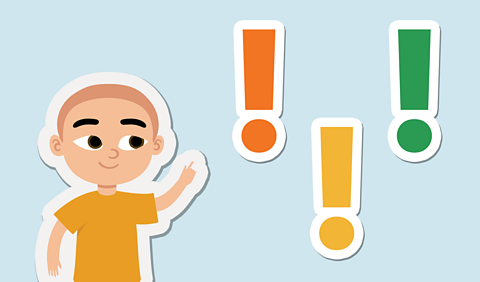
- count5 of 6
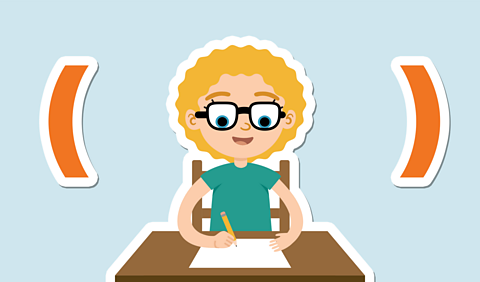
- count6 of 6
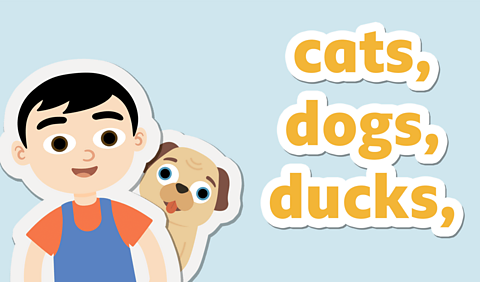
- count1 of 6
